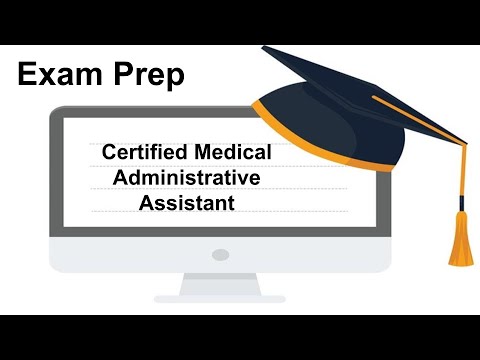What to Expect in a Medical Assistant Class
Contents [show]
If you’re considering a career in medical assisting, you’re probably wondering what you can expect from a typical class. Here’s a quick overview of what you can expect to learn in a medical assistant class.
Checkout this video:
Class structure
medical assistant classes typically have a lecture and laboratory component. The lecture portion of the class will cover topics such as anatomy and physiology, Medical Terminology and basics of patient care. The laboratory component will give students the opportunity to practice skills such as taking vital signs and performing blood draws.
Coursework
Medical assistant classes typically cover a wide range of topics, from basic anatomy and physiology to medical insurance and coding. In most cases, you can expect your coursework to include some or all of the following topics:
-Anatomy and physiology
-Medical terminology
-Patient communication
-Medical office procedures
-Electronic health records
-Insurance billing and coding
-Introduction to pharmacology
-Laboratory procedures
-Infection control
Clinical experience
Most medical assistant classes will include some sort of clinical experience, whether that be in the form of an externship, practicum, or internship. This is an important part of your education, as it will give you the chance to put your knowledge to the test and get some real-world experience. Be sure to ask your school about the options available to you and what you can expect in terms of hours and compensation (if any).
Externship
An externship is a period of time spent in an off-site location in order to gain experience in the field. Medical assistant students will often participate in an externship during their studies in order to get a feel for the day-to-day tasks and responsibilities of the job. The externship can last anywhere from a few weeks to a few months, and it is typically unpaid.
Certification
Medical assistant certification is not required in all states, but many employers prefer to hire certified Medical assistants There are several certification options available, and you will need to decide which is best for you. The most common certification organizations are the American Association of Medical Assistants (AAMA), the National Healthcare Association (NHA), and the American Medical Technologists (AMT). Each organization has its own certification process and requirements.
The AAMA offers the Certified Medical Assistant (CMA) credential, which requires completing an accredited medical assistant program and passing a national exam. The NHA offers the Certified Clinical Medical Assistant (CCMA) credential, which requires completing an accredited medical assistant program and passing a national exam. The AMT offers the Registered Medical Assistant (RMA) credential, which requires completing an accredited medical assistant program and passing a national exam.
Once you have completed your medical assistant program and passed the certification exams, you will be ready to start your career as a medical assistant!
Job outlook
The average salary for a medical assistant in 2017 was $15.61 per hour, or $32,480 per year, according to the Bureau of Labor Statistics. Medical assistants can find work in a variety of settings, including hospitals, clinics, physicians’ offices and even insurance companies. In addition to being able to find a job in a number of different settings, medical assistants also have the opportunity to specialize in a particular area of medicine.
Salary
Medical assistants are one of the most in-demand and fastest-growing careers in the healthcare industry. With an aging population and advances in medical technology, the need for skilled medical assistants is expected to continue to grow.
As a medical assistant, you can expect to earn a competitive salary. The median annual salary for medical assistants was $32,480 in 2016, according to the Bureau of Labor Statistics. The top 10% of earners made more than $45,860, while the bottom 10% earned less than $23,560.
Career options
Medical assistants are in demand in a variety of settings. They can find employment in doctors’ offices, clinics, hospitals, and even insurance companies. Many medical assistants opt to specialize in a particular area, such as pediatrics, geriatrics, or surgery. Some medical assistants also choose to become certified in order to perform more complex tasks, such as taking X-rays or administering injections.
Professional development
Most medical assistant classes will cover topics such as medical law, professional development, and how to handle medical emergencies. You can expect to spend some time in each class session learning about these topics so that you can be prepared to work in a medical office.
Continuing education
If you are a medical assistant, you may be wondering if you need to take continuing education courses. The answer is that it depends on several factors, including your state’s requirements, your employer’s expectations and your own professional goals.
In some states, medical assistants are required to take continuing education courses in order to maintain their certification. Even if your state does not have this requirement, your employer may expect you to take courses to keep up with the latest changes in medical technology and procedures. If you are looking to advance your career or move into a new specialty, taking continuing education courses can help you stay up-to-date on the latest developments in your field.







